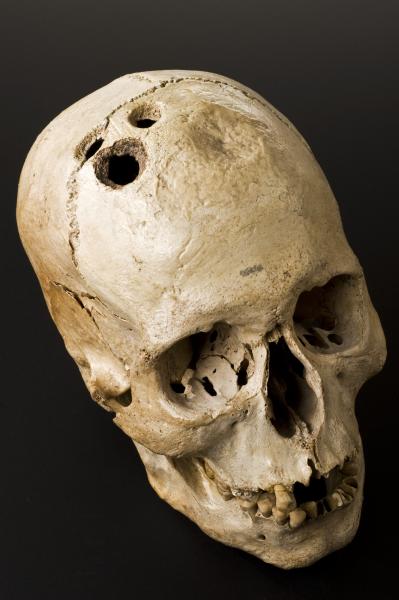Despite the macabre nature of the grim discovery of a Medieval Italian woman’s body buried with her partially delivered unborn baby, the medical findings and their implications prove quite fascinating and educational. Though my colleagues at ACSH were unanimously horrified by the gruesome details of the case when I brought it to their attention and the notion of a post-mortem “coffin birth” in general, the account just published in World Neurosurgery marries my interests in neurosurgery (the field in which I started my career), maternal-fetal physiology and forensics while informing about the dynamic strides made over time in medical thinking.
After learning about this story, you will realize how fortunate you are to be alive now when it comes to medical understanding, advances and progress.
The Tale Told By The Anthropological Analysis of Skeletal Remains
The goal of this case report was to utilize modern analytic techniques coupled with historical perspective to determine the timeline of events and cause of death for this young mother buried while pregnant and with a penetrating injury to the frontal bone of her cranium.
-
Could the perforating head trauma represent further evidence of trepanation, an applied surgical treatment, taking place in the Middle Ages? If so, then why did she have it?
-
Did the fetal remains extending from the woman’s pelvis to her knees reflect a so-called “coffin birth” or partial one at that?
-
Did she survive the possible brain surgery for any length of time before her death?
Trepanation - The Oldest Form of Neurosurgery
Trepanation is considered one of the most ancient surgical interventions. It involves cutting or drilling one or more holes in the skull. The procedure was used since the Neolithic era to treat a host of conditions neurologic and traumatic in origin from severe headaches and convulsions to hypertensive or vascular pathologies that disrupt cerebral blood flow. Any situation that raises the pressure inside the skull could warrant this intervention.
Because maternal mortality is an issue throughout the ages, the potential use of trepanation in a pregnant woman makes this case all the more compelling.
Through Science, The Bones Have Spoken
After applying common forensic methods, it was determined a scalping process readied the head area for trepanation of a young woman for a medical purpose as opposed to an accidental or violent one. The procedure took place at least a week before death which is consistent with its stage of healing deemed by the extent of bone remodeling.
The case subject is pictured here in her burial site (source listed below). If you zoom in, then you can see the hole in the front portion of her skull. The tiny bones in her pelvic region and in between the woman's thigh bones are the fetal remains.

Due to the late stage of the pregnancy and the use of trepanation in history to treat diseases that elevated blood pressure to the brain, it is believed the intervention was used to manage preeclampsia - a disorder or complication of pregnancy that prompts high blood pressure, protein spillage in the urine, and swelling of the hands and lower extremities typically after 20 weeks gestation. When seizures develop, it is called eclampsia. But, it can’t be ruled out that she died of a labor-related problem or as a consequence of the surgery.
Evidence from the burial site in Imola, Italy (estimated 7-8th AD) along with study of the adult and immature human skeletons discovered affirm the woman was pregnant upon her death. In How Chemistry, Microbiology Could Help Catch A Killer, I address the deterioration of a corpse follows well-established stages: fresh, bloated, active decay, advanced decay, dry and remains. It is during “the emphysematous phase of putrefaction” that gases in the abdomen are released and increase the pressure that caused the fetus to be forcibly expelled from the womb. Hence, the term “coffin birth” - aka “post-mortem fetal extrusion phenomenon.”
The Lessons Over Time
Time has been a kind, successful prescription for many conditions impacting maternal and infant mortality. The knowledge acquired from greater medical understanding and the innovation that brings could have potentially spared this young woman her tragic fate. Though drilling a burr hole in the skull is still a practice in neurosurgery today, it is reserved for situations that warrant relief of pressure on the brain like those created by blood collection from a head trauma. We have progressed to learn that it is not helpful for an expectant mother’s preeclampsia.
We now know the signs and symptoms of such issues in pregnancy - monitor and intervene accordingly - and realize that delivery of the baby cures much of these ails in the realm of preeclampsia, with the goal of preventing development of eclampsia.
Source:
Pasini A, Manzon VS, Gonzalez-Muro X, Gualdi-Russo W, Neurosurgery on a pregnant woman with post-mortem fetal extrusion: an unusual case from Medieval Italy, World Neurosurgery (2018), doi: 10.1016/j.wneu2018.02.044




